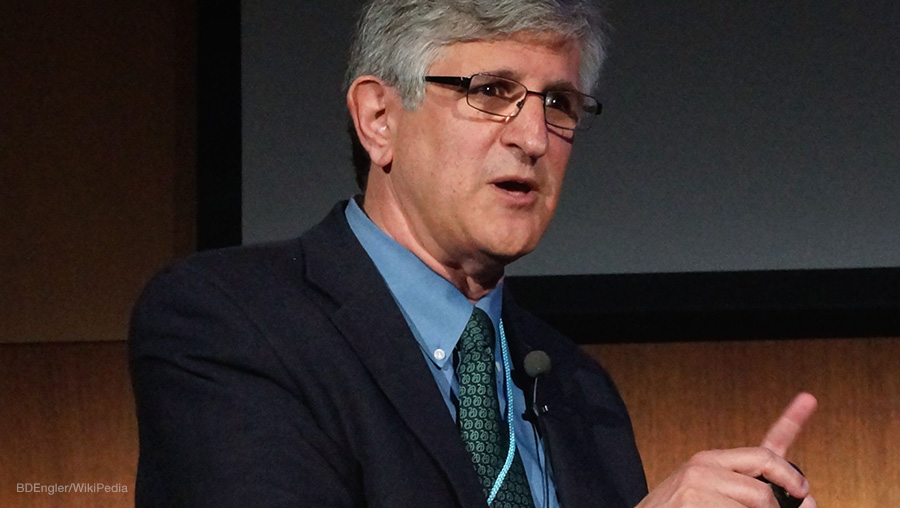The New York Times’ board of directors has ties to Big Pharma, as revealed in its own website
11/24/2015 / By Norman Smith

This article takes a look at some of the directors who sit on the board of what is arguably the most well-known newspaper in the world today: The New York Times.
Although these directors don’t wield the same influence that owners, editors and reporters have over content, their influence is far from trivial (especially when the board member is also an owner, as in the case of Carolyn Greenspon, who is profiled below). The decision-making process within any private organization is difficult to trace without insider access, but it’s reasonable to assume that the Times board does have an effect on what news the paper covers and how it’s presented.
Board members have a lot in common. Most of them either sit on boards or are executives of other large corporations, while others are officials in government. They move sideways, from corporation to corporation, or corporation to government and vice-versa. Being of the same social class, corporate executives tend to have similar interests and share beliefs that fall within a relatively narrow spectrum, so it can be reasonably assumed that those interests and beliefs shape the policies they create. In the words of the classical economist Adam Smith, they see to it that their shared interests are “most peculiarly attended to.”
Let’s say you’re the CEO of Big Pharma Megacorporation X, and you sit on the board of The New York Times. As a responsible board member and self-respecting elitist, the daily Times is required reading, and it would probably bother you if negative stories about Big Pharma were routinely published. The newspaper’s ownership and editors are surely aware of that. They know you’re a Big Pharma bigwig and are likely to keep that in mind when deciding what to publish and how to present it. If they consistently publish negative pharmaceutical stories, as a board member, you could express your displeasure and your voice would be heard.
The power of the elements: Discover Colloidal Silver Mouthwash with quality, natural ingredients like Sangre de Drago sap, black walnut hulls, menthol crystals and more. Zero artificial sweeteners, colors or alcohol. Learn more at the Health Ranger Store and help support this news site.
Of course, that doesn’t mean there would be no negative stories about Big Pharma. After all, as a huge and controversial industry, it’s obviously newsworthy, and the Times is allotted a huge budget for gathering important news, with a staff of well-paid professional journalists and editors who probably don’t want to do a terrible job. So, if the Times never reported on Big Pharma, or if all it’s reporting were positive stories, it would indicate not only an utter lack of journalistic competency, but obvious self-censorship.
So, if you read the Times, you will definitely see reports about Big Pharma; however, it’s typically filtered through a journalistic and editorial lens that distorts the picture enough to satisfy the interests of the owners, managers and advertisers. Scandals will be published, but reports will make them seem like isolated events, while focusing on exposing the misdeeds of certain individuals who can be portrayed as “bad seeds” not representative of the whole. You will see stories about how Big Pharma Megacorp X got caught breaking a law, but it will be presented as an isolated mistake, usually rectified by the payment of a fine and then eventually quietly forgotten. You definitely won’t see any pharmaceutical corporation referred to as a drug-dealing criminal organization, accompanied by a long list of its crimes.
With that in mind, let’s look at a few current board members of The New York Times who have links to Big Pharma.
From the Times website, we learn that Ellen R. Marram was elected to the board of directors of The New York Times in 1998. She was president and CEO of the Tropicana Beverage Group from 1997-98, and, prior to that, was president and CEO of Nabisco Biscuit Company. (See how they move sideways?) Since 2002, she has served on the board of directors of one of the biggest pharmas, Eli Lilly and Company.
A recent Eli Lilly controversy that occurred during Ms. Marram’s tenure is the alleged kickback scheme involving doctors in China. Allegedly, the company funneled millions of dollars to these doctors to get them to prescribe more Eli Lilly drugs. Reuters duly reported the story, but was careful to present it from the viewpoint of the accused wrongdoer, as captured in the headline: “Lilly says deeply concerned by bribery allegations in China.” No doubt they were concerned about the allegations. The bribery? Not so much.
One of Lilly’s all-time greatest hits was the revolutionary antidepressant Prozac, which hit the market in 1987, and launched the era of SSRI drugs (Select Serotonin Reuptake Inhibitors). Prozac was prescribed so frequently that it quickly became responsible for almost a quarter of Lilly’s entire annual income.
Ms. Marram became a board member the year after the Prozac patent expired, and just before Lilly began marketing an SSRI variation called Cymbalta, which has since become the most popular antidepressant in the United States, with over 10 million monthly prescriptions.
The so-called “Zyprexa Papers Scandal,” involving Lilly’s psych drug of the same name, provides a good example of how news contrary to a board member’s interest is reported. The Times broke the story with a series of front-page articles which concluded that “The drug maker Eli Lilly has engaged in a decade-long effort to play down the health risks of Zyprexa, its best-selling medication for schizophrenia, according to hundreds of internal Lilly documents and e-mail messages among top company managers.”
The Times later summarized the scandal as follows: “A New York Times reporter, Alex Berenson, was given a copy of the documents, which showed that Lilly executives had kept information from doctors about Zyprexa’s links to obesity and higher blood sugar, a claim Lilly has denied. He wrote front-page articles based on the information. Eli Lilly has now paid $1.2 billion to settle more than 28,000 cases from individuals who contended that they developed diabetes or other diseases from taking Zyprexa.”
So Lilly, we are to understand, did bad but then did good. And not only that, as also reported in the Times, a federal court ordered the damning documents to be returned to Lilly, on the grounds that the “scheme” to expose the contents of the documents was illegitimate. And the reporter who broke the story? Well, he no longer is a reporter; he now writes fictional crime novels instead of writing about actual crime. Case closed.
Speaking of psych drugs, a psychotherapist named Carolyn D. Greenspon has been on the board of the Times since 2010. Ms. Greenspon happens to be “a fifth-generation member of the family that controls The New York Times Company,” the Times explained upon her election to the board. Since 2002, she has been a psychotherapist at Comprehensive Psychiatric Associates, where “her areas of expertise include depressive disorders, bipolar disorder, young adult emotional issues and parent counseling/guidance.”
As a licensed clinical social worker, she’s not authorized to write prescriptions, so she can’t be accused of prescribing any of the 10 million monthly doses of Cymbalta or other zombifying psych drugs. However, her profession obviously has a symbiotic relationship with Big Pharma, which employs approximately 72,000 sales representatives and spends about $24 billion annually on marketing to physicians in the United States. So, it seems likely that Ms. Greenspon might not be too keen on siccing investigative reporters on evil pharmaceutical companies.
Another Big Pharma presence on the board of the Times is Raul E. Cesan. The newspaper’s website summarizes: “Raul E. Cesan was elected to the Board of Directors of The New York Times Company in 1999…. Previously, Mr. Cesan served as president and chief operating officer of the Schering-Plough Corporation from 1998 until 2001, culminating a nearly 25-year career at the company.”
Schering-Plough is probably best known for the over-the-counter drug Claritin, the sunscreen lotion Coppertone and its footwear brand, Dr. Scholl’s. As reported in Chemical and Engineering News, the company was penalized with the highest fine ever assessed ($500 million) for violations of the Federal Drug Administration’s Good Manufacturing Practice regulations. The FDA conducted 13 inspections between 1998 and 2001 — precisely the span of Mr. Cesan’s tenure as CEO — and found violations related to manufacturing, quality assurance, equipment, laboratories, packaging and labeling.
“Some of the problems relate to the lack of controls that would identify faulty medicines, while others stem from outdated equipment,” noted The New York Times. The violations affected about 200 Schering-Plough medicines, including Claritin, its best seller. In March 2000, the company recalled millions of asthma inhalers, because a key ingredient was suspected to be missing. Some asthma patients died while using inhalers that were later recalled, prompting the consumer watchdog group Public Citizen to call for a criminal investigation of Schering-Plough.
In 2008, Schering-Plough was sold for $41 billion to Merck, but Raul Cesan was gone by then, so it would perhaps be unfair to fault him for any of Merck’s many crimes.
Sources:
Tagged Under: Big Pharma, corporate greed, New York Times




















